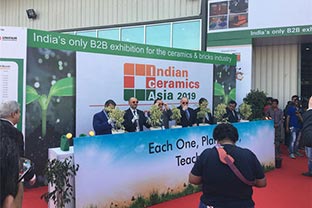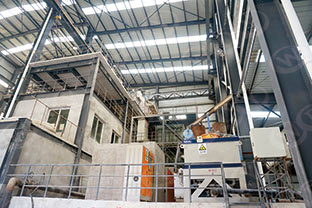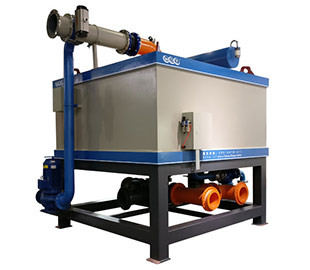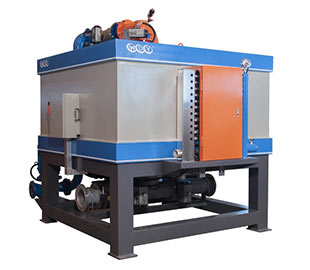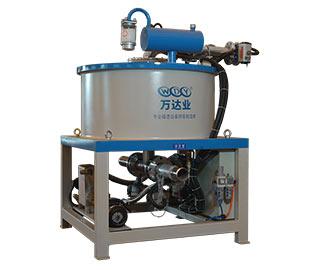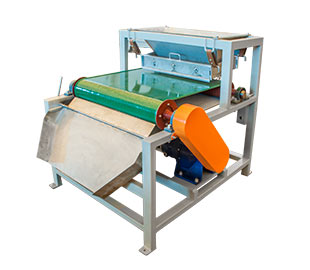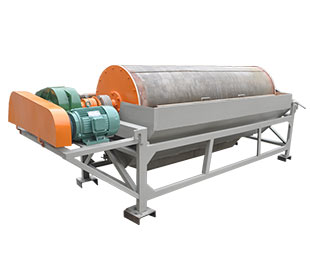Magnetic separator manufacturers share the steps of beneficiation and purification
Author:WDY Magnetic Separator Release Time:2021-05-12 11:42:40 Views:
For the fine processing of non-metallic minerals, beneficiation and purification are essential. Therefore, customers often ask: How to remove potassium and sodium impurities in kaolin? What should I do if the iron content in the quartz ore is too high? Next, the magnetic separator manufacturer will share the "three-step method of beneficiation and purification" for everyone. I believe that after reading it, you will have a correct understanding of how to purify minerals.
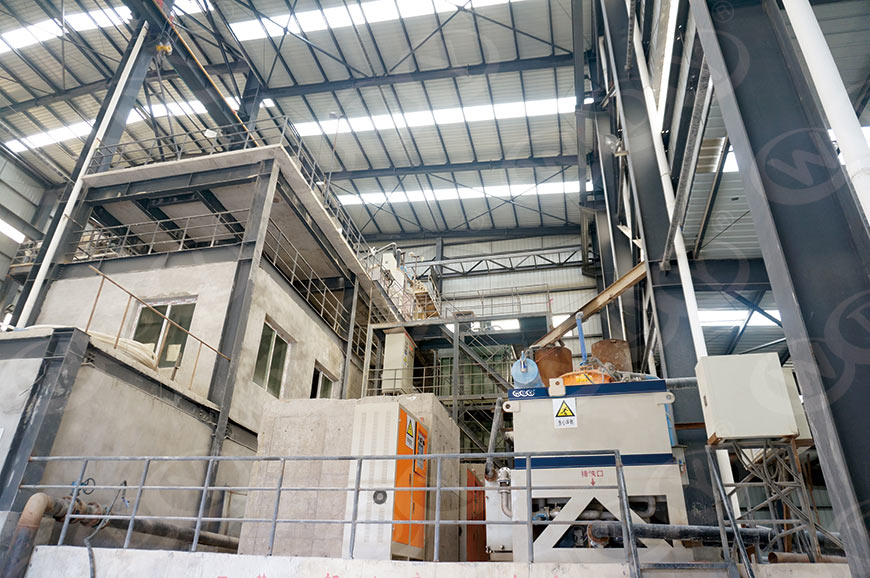
Step 1: Process mineralogical analysis
If you want to beneficiate and purify ore, you must first understand it, that is, process mineralogical analysis. Among them, elemental analysis, mineral analysis, and monomer dissociation degree determination are very necessary.
Elemental analysis: find out the types and contents of elements contained in the ore, and distinguish which are the main elements? What are the secondary elements? What are the beneficial elements? What are harmful elements?
Mineral analysis: to find out what kind of minerals various elements in the ore exist, and the content of various minerals.
Determination of the degree of dissociation of mineral monomers: To remove impurities, the impurity minerals must be separated from useful minerals. Therefore, the dissociation of minerals greatly affects the selectivity of the ore.
Step 2: Grinding and particle size analysis
The purpose of the grinding test is to determine an extremely reasonable grinding time, that is, to achieve full dissociation of useful minerals and impurity minerals with very little energy consumption.
The particle size analysis is mainly to determine the particle size distribution of the product after grinding, and perform elemental analysis and mineral analysis on the mineral samples of each particle size to understand the main distribution of useful minerals and impurity minerals.
If the impurity minerals and useful minerals are not in the same size grade, the purification can be achieved through classification, or pre-classification and sorting can be carried out. For example, after grinding and particle size analysis of a certain kaolin, it is found that the particle size of impurity minerals such as feldspar and quartz is relatively coarse, while the particle size of kaolin is relatively fine. In this case, spiral classification or hydraulic classification can effectively remove feldspar and quartz impurities in kaolin.
Step 3: Choose a purification method
After the above analysis of the ore, it can be sorted according to the difference in the properties of impurity minerals and useful minerals. At this stage, the industrialized ore dressing and purification technologies mainly include gravity separation, flotation, magnetic separation, chemical separation, color separation, electric separation, biological separation, etc. In industrial practice, multiple beneficiation methods are often used in combination.
Gravity separation: Separation is carried out according to the different motion states of the ore of different particle size and density in the flowing medium, including: hydraulic classification, heavy medium beneficiation, jigging beneficiation, interference bed beneficiation, shaking table beneficiation, chute beneficiation, centrifugal beneficiation, washing Mine etc. Such as kaolin hydraulic classification, barite jigging and so on.
Flotation: separation according to the difference in surface properties (hydrophobic, hydrophilic) of different minerals. It is a kind of beneficiation method with very wide application and excellent effect for the separation of fine and very fine materials. Such as the separation of fluorite and calcite, the separation of quartz and feldspar, etc.
Magnetic separation: realize separation and purification according to the magnetic difference of different minerals, which is an important method for removing iron and whitening non-metallic minerals.
Chemical beneficiation: According to the differences in the chemical properties of mineral components, chemical methods or a combination of chemical methods and physical methods are used to achieve the separation or purification of minerals. It is mainly used in the purification of some high value-added minerals that require high purity and are difficult to meet the purity requirements by mechanical and physical beneficiation methods. Including mineral acid-base treatment, chemical bleaching, roasting and calcining, etc. Such as acid leaching of quartz sand, calcination of kaolin, and bleaching of clay minerals.
Others: color separation, electric separation, biological beneficiation, etc.
The above is the three steps of ore beneficiation and purification shared by the magnetic separator manufacturer. I hope it can be helpful to everyone.

Step 1: Process mineralogical analysis
If you want to beneficiate and purify ore, you must first understand it, that is, process mineralogical analysis. Among them, elemental analysis, mineral analysis, and monomer dissociation degree determination are very necessary.
Elemental analysis: find out the types and contents of elements contained in the ore, and distinguish which are the main elements? What are the secondary elements? What are the beneficial elements? What are harmful elements?
Mineral analysis: to find out what kind of minerals various elements in the ore exist, and the content of various minerals.
Determination of the degree of dissociation of mineral monomers: To remove impurities, the impurity minerals must be separated from useful minerals. Therefore, the dissociation of minerals greatly affects the selectivity of the ore.
Step 2: Grinding and particle size analysis
The purpose of the grinding test is to determine an extremely reasonable grinding time, that is, to achieve full dissociation of useful minerals and impurity minerals with very little energy consumption.
The particle size analysis is mainly to determine the particle size distribution of the product after grinding, and perform elemental analysis and mineral analysis on the mineral samples of each particle size to understand the main distribution of useful minerals and impurity minerals.
If the impurity minerals and useful minerals are not in the same size grade, the purification can be achieved through classification, or pre-classification and sorting can be carried out. For example, after grinding and particle size analysis of a certain kaolin, it is found that the particle size of impurity minerals such as feldspar and quartz is relatively coarse, while the particle size of kaolin is relatively fine. In this case, spiral classification or hydraulic classification can effectively remove feldspar and quartz impurities in kaolin.
Step 3: Choose a purification method
After the above analysis of the ore, it can be sorted according to the difference in the properties of impurity minerals and useful minerals. At this stage, the industrialized ore dressing and purification technologies mainly include gravity separation, flotation, magnetic separation, chemical separation, color separation, electric separation, biological separation, etc. In industrial practice, multiple beneficiation methods are often used in combination.
Gravity separation: Separation is carried out according to the different motion states of the ore of different particle size and density in the flowing medium, including: hydraulic classification, heavy medium beneficiation, jigging beneficiation, interference bed beneficiation, shaking table beneficiation, chute beneficiation, centrifugal beneficiation, washing Mine etc. Such as kaolin hydraulic classification, barite jigging and so on.
Flotation: separation according to the difference in surface properties (hydrophobic, hydrophilic) of different minerals. It is a kind of beneficiation method with very wide application and excellent effect for the separation of fine and very fine materials. Such as the separation of fluorite and calcite, the separation of quartz and feldspar, etc.
Magnetic separation: realize separation and purification according to the magnetic difference of different minerals, which is an important method for removing iron and whitening non-metallic minerals.
Chemical beneficiation: According to the differences in the chemical properties of mineral components, chemical methods or a combination of chemical methods and physical methods are used to achieve the separation or purification of minerals. It is mainly used in the purification of some high value-added minerals that require high purity and are difficult to meet the purity requirements by mechanical and physical beneficiation methods. Including mineral acid-base treatment, chemical bleaching, roasting and calcining, etc. Such as acid leaching of quartz sand, calcination of kaolin, and bleaching of clay minerals.
Others: color separation, electric separation, biological beneficiation, etc.
The above is the three steps of ore beneficiation and purification shared by the magnetic separator manufacturer. I hope it can be helpful to everyone.
Related Articles
PREV:Methods of Improving the Working Efficiency of Dry Magnetic Separator Equipment
NEXT:No More Articles
YOU MAY ALSO LIKE...



